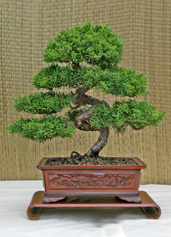Botany Basics - Part 2:
Leaves
We have heard that leaves are the “food factories” of plants. What does this really mean and how do they work?
The anatomy of a leaf is like a sandwich. On either side there are layers called epidermis; in the middle are chloroplast containing cells where photosynthesis takes place. This middle layer is called mesophyll (Greek meso-middle, phyll-leaf). Mesophyll cells are only a few cells removed from veins that wind their way through the leaf. Each vein contains xylem cells to supply the mesophyll with water and nutrients and phloem cells to remove newly made foods. The upper epidermis is usually smooth and dense to help reduce water loss. Some plant leaves are covered with dense mats of hairs that help reduce water loss. The lower epidermis contains “breathing pores” called stomata (Greek stoma- mouth). The location of the stomata in the lower epidermis keeps them from becoming plugged with dust that normally gathers on the top surface and prevents entry of harmful air borne fungal spores. Leaves tending to stand upright, such as Iris, have stomata in both leaf surfaces. Because the lower surface of water lily leaves are submerged, the stomata are on the top surface.
Stomatal openings permit gases to enter the leaf and water vapor to escape. Periodic stomatal closures are used to regulate such water losses. In most plants, stomata routinely close at night as the absorption of carbon dioxide is not necessary when photosynthesis is not taking place. They may also close on hot, dry days, in heavy winds or when the soil gets dry or anytime that the uptake of water does not keep up with the rate of water loss.
Each stoma is bordered by two special cells, called guard cells, controlling the size of the opening. The guard cells inner walls, adjacent to the openings, are thicker than the outer walls. In a relaxed state, the guard cells lie parallel to each other with no opening between them. When the plant pumps water into them, the thin walls stretch, the shape of the cells change, curving away from each other, and the stoma opens. Loss of water to the guard cells reverses the process. The anatomy of leaves are perfectly designed to bring together the ingredients for the chemistry of photosynthesis. Water and dissolved minerals flow through the plants xylem, connecting roots and stems with leaf petioles, midribs and veins. Carbon dioxide enters the leaf through open stomata, then defuses into the mesophyll cells, where the gas collects. Finally, in the chloroplasts, light and raw materials converge in the process upon which all life depends.
The photosynthesis process
The harvesting of sunlight by chloroplasts leads to a series of events in which water and carbon dioxide are used to synthesize simple molecules that in turn will be used to build substances of increased molecular complexity. The first products of the process are several types of sugars: ribulose diphosphate, glucose, fructose and sucrose.
Thousands of glucose molecules are united in long chains forming molecules of starch and cellulose. Although these two substances differ only in the manner in which they are joined together, they function in completely different ways. Starch is the principal food stored in plant cells until needed as energy or for conversion into other plant products by specialized enzymes. Cellulose, on the other hand, once formed and incorporated into cell walls is not available for other purposes. The photosynthesis process utilizes hydrogen from the water and releases oxygen back to the atmosphere.
Following the production of sugars, the biochemistry of plants leads in many directions, some of which involve the introduction of mineral elements from the soil, into the structure of certain molecules. We will discuss these functions as they arise, in future articles.
The advent of photosynthesis opened the way for nature to spawn the magnificent array of creatures on our living planet. Of these, evolution’s most complex product, the human species, owes a special debt to this remarkable process. It provides the oxygen we breathe, supplies materials for food, clothing and shelter; they filter the air and provide fuel for cooking and warmth. Man’s attempts to duplicate this process has been in vain.
Please click on one of the links below:

